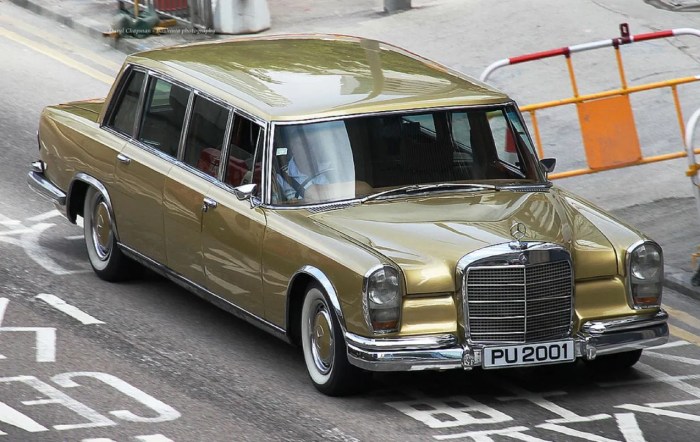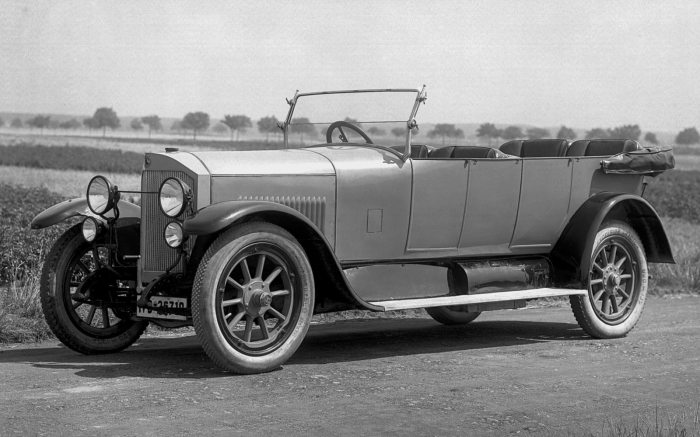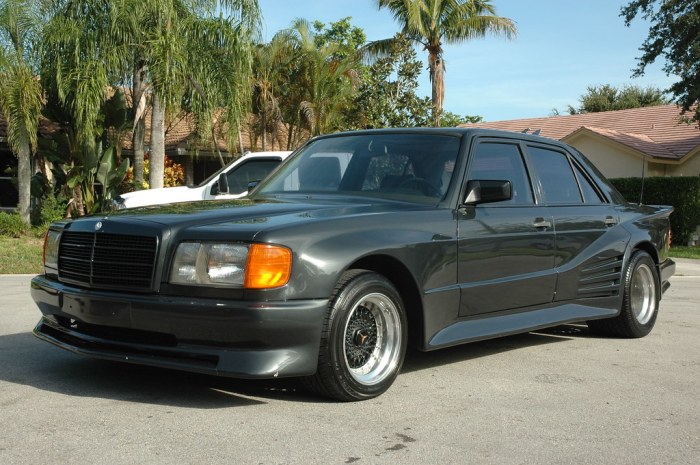The 1934 Mercedes-Benz 500K, a masterpiece of automotive engineering, embodies the spirit of innovation and luxury that defined the era. This sleek, powerful car was more than just a vehicle; it was a statement of wealth, status, and technological prowess.
The 500K emerged at a pivotal moment in German history, a time of economic and social upheaval, but also a period of burgeoning automotive innovation. Mercedes-Benz, already a leader in the industry, sought to push the boundaries of design and performance with the 500K, a car that would become synonymous with the marque’s legacy.
The 500K’s design was a testament to the German engineering ethos, blending aerodynamic elegance with robust construction. Its supercharged engine, a marvel of engineering for its time, propelled the car to impressive speeds, making it a formidable contender on the racetrack.
The 500K’s success transcended the automotive world, becoming a cultural icon, gracing the pages of magazines, appearing in films, and inspiring generations of designers. The 500K’s legacy continues to this day, with collectors and enthusiasts alike drawn to its timeless beauty and engineering brilliance.
Historical Context: 1934 Mercedes-Benz 500K

The 1934 Mercedes-Benz 500K emerged during a turbulent period in Germany’s history, marked by economic hardship and political upheaval. The country was still reeling from the effects of the Great Depression, which had devastated its economy and led to widespread unemployment.
The rise of the Nazi Party under Adolf Hitler had also begun to reshape the political landscape, bringing with it a wave of nationalism and authoritarianism. This tumultuous backdrop played a significant role in the development and reception of the 500K.
The Role of Mercedes-Benz in the German Automotive Industry
Mercedes-Benz, then known as Daimler-Benz, was already a prominent player in the German automotive industry. The company had a long history of innovation and engineering excellence, dating back to the early days of the automobile. In the 1930s, Mercedes-Benz was known for its high-performance sports cars and luxury vehicles, which were prized by the wealthy and influential.
The company’s reputation for quality and craftsmanship was further enhanced by the 500K, which was seen as a symbol of German engineering prowess and national pride. The car’s powerful engine, sleek design, and luxurious features made it a favorite among the German elite, including high-ranking Nazi officials.
The Significance of the 500K Model
The 500K was a significant model for Mercedes-Benz, marking a departure from the company’s previous focus on smaller, more affordable vehicles. The car was designed to be a high-performance sports car that could compete with the best offerings from other European manufacturers.
The 500K’s powerful engine and advanced technology made it one of the fastest and most luxurious cars of its time. The model’s success helped to solidify Mercedes-Benz’s position as a leading manufacturer of luxury and performance vehicles.
Design and Engineering

The Mercedes-Benz 500K, launched in 1934, was a pinnacle of automotive design and engineering, showcasing the era’s cutting-edge technology and aesthetic sensibilities. Its sleek and powerful design, coupled with innovative engineering features, set a new standard for luxury automobiles, influencing car design for decades to come.
Aerodynamic Design
The 500K’s design philosophy centered on streamlining and aerodynamic efficiency. The car’s low-slung body, with its rounded curves and flowing lines, was a departure from the boxy designs of the time. The emphasis on aerodynamics was evident in the teardrop-shaped body, integrated headlamps, and streamlined fenders.
This aerodynamic design not only enhanced the car’s performance but also contributed to its distinctive and elegant aesthetic.
The 1934 Mercedes-Benz 500K was a masterpiece of engineering, renowned for its sleek design and powerful engine. While the 500K was a luxury car, Mercedes-Benz also produced more affordable models like the 1938 Mercedes-Benz 170DS , which offered a more practical and economical option for the masses.
Despite the difference in price and target audience, both models reflected the brand’s commitment to quality and innovation, establishing Mercedes-Benz as a leading force in the automotive industry.
Supercharged Engine
One of the most significant engineering innovations of the 500K was its supercharged engine. This powerful 5-liter, 8-cylinder engine, equipped with a Roots-type supercharger, delivered an impressive 160 horsepower, a remarkable feat for its time. The supercharger forced air into the engine, increasing its power and torque, making the 500K one of the fastest cars in the world.
Independent Suspension
The 500K also featured an innovative independent suspension system. This system allowed each wheel to move independently, improving the car’s handling and ride comfort. The independent suspension system, combined with the powerful engine, allowed the 500K to navigate challenging terrain and maintain its stability at high speeds.
Design Comparisons
The 500K’s design, with its emphasis on aerodynamics and performance, stood in stark contrast to the more traditional and boxy designs of contemporary luxury cars. While cars like the Rolls-Royce Phantom II and the Duesenberg Model J emphasized opulence and grandeur, the 500K focused on performance and efficiency.
The 500K’s sleek design, combined with its powerful engine and advanced suspension, positioned it as a true performance car, attracting a clientele seeking both luxury and speed.
Performance and Handling

The 1934 Mercedes-Benz 500K was a marvel of engineering, boasting exceptional performance and handling that made it a force to be reckoned with both on the road and on the racetrack. Its powerful engine, advanced suspension, and aerodynamic design combined to deliver a driving experience that was both exhilarating and refined.
Performance Capabilities
The 500K’s engine was a masterpiece of automotive engineering. Its 5-liter, supercharged, straight-eight engine produced an impressive 160 horsepower, making it one of the most powerful cars of its time. This power allowed the 500K to reach a top speed of over 100 mph, a remarkable feat for a car built in the 1930s.
The 1934 Mercedes-Benz 500K, with its sleek lines and powerful engine, was a symbol of automotive luxury and performance in its era. Fast forward to 1992, and Mercedes-Benz continued its legacy with the 1992 Mercedes-Benz 600SEL , a luxurious sedan that embodied the brand’s commitment to innovation and comfort.
While the 500K was a testament to the craftsmanship of a bygone era, the 600SEL showcased the advancements in technology and engineering that defined the modern Mercedes-Benz.
The engine’s smooth and responsive nature provided ample power for both touring and racing.
Handling Characteristics
The 500K’s handling was equally impressive. Its independent front suspension and rigid rear axle provided excellent stability and control. The car’s low center of gravity, thanks to its lightweight construction and aerodynamic design, further enhanced its handling capabilities. The 500K was renowned for its precise steering and responsive braking, making it a joy to drive on winding roads and racetracks alike.
The 500K in Historical Events
The 500K’s performance and handling prowess were evident in its success in various historical events. It participated in numerous races, including the Mille Miglia, where it achieved impressive results. One notable example was the 1934 Mille Miglia, where a 500K driven by Manfred von Brauchitsch finished in second place.
The car’s reputation as a reliable and powerful machine solidified its place as a legend in the world of motorsports.
Cultural Impact and Legacy

The Mercedes-Benz 500K’s influence extends far beyond its technical achievements. It became a symbol of a bygone era, representing luxury, performance, and the pinnacle of German engineering. Its impact resonated across various aspects of culture, solidifying its place in automotive history.
Impact on Automotive Design and Engineering
The 500K’s design, with its sleek lines, powerful engine, and advanced features, set a new standard for luxury automobiles. Its influence can be seen in the design of subsequent Mercedes-Benz models, as well as other luxury car manufacturers. The 500K’s innovative features, such as its independent suspension and supercharged engine, pushed the boundaries of automotive technology and paved the way for future advancements.
Role in Popular Culture
The 500K’s allure transcended the realm of automotive engineering, capturing the imagination of filmmakers, writers, and artists. Its elegant design and powerful performance made it a popular choice for cinematic appearances, often representing wealth, status, and sophistication.
The 500K’s distinctive design and powerful engine made it a natural fit for the silver screen, appearing in films such as “The Great Gatsby” (2013) and “The Wolf of Wall Street” (2013).
The 500K’s legacy extends to literature as well. Authors often used the car as a symbol of luxury and power, reflecting the social and economic climate of the era.
Enduring Legacy
The Mercedes-Benz 500K remains a timeless icon, symbolizing the pinnacle of automotive engineering and luxury. Its influence can be seen in modern Mercedes-Benz models, which continue to embody the same principles of performance, elegance, and innovation. The 500K’s legacy serves as a testament to the enduring power of design, engineering, and craftsmanship.
Notable Examples and Owners

The Mercedes-Benz 500K’s enduring appeal is evident in the numerous surviving examples and their storied pasts. These cars have graced the garages of royalty, celebrities, and automotive enthusiasts alike, leaving an indelible mark on automotive history.
Notable Examples
The 500K’s legacy is intertwined with the lives of its owners. Several examples stand out for their unique features, historical significance, and the personalities associated with them.
- Chassis Number 500.002:This car, originally owned by the German entrepreneur and art collector, Emil Georg von Staehelin, is considered the most significant 500K ever built. It features a unique, streamlined body designed by the renowned coachbuilder, Hermann Spohn. This car was the first to be presented at the 1934 Berlin Motor Show and later became a cornerstone of the Mercedes-Benz museum collection.
- Chassis Number 500.006:This car was owned by the renowned American industrialist, William Randolph Hearst, and was one of the first 500Ks to be imported to the United States. Its original bodywork, designed by the coachbuilder, Weymann, was later replaced with a more modern design by the American coachbuilder, Derham.
This car remains a testament to the international appeal of the 500K.
- Chassis Number 500.011:This car was originally owned by the renowned German industrialist, Fritz von Opel, who was known for his pioneering work in the development of rocket-powered cars. The car’s unique bodywork, designed by the coachbuilder, Gläser, featured a distinctive, aerodynamically shaped front end.
This car was later acquired by the German entrepreneur, Ernst Heinkel, and is now part of the collection of the Mercedes-Benz Museum.
Notable Owners
The 500K was a symbol of status and prestige, attracting a diverse array of owners.
- King Leopold III of Belgium:The King of Belgium owned a 500K, demonstrating the car’s appeal to royalty.
- Alfred von Braun:A German entrepreneur and aviation pioneer, von Braun was a passionate advocate for the development of the German automobile industry. He owned a 500K, which he used to travel throughout Germany.
- Baron Hans von Fürstenberg:A German nobleman and industrialist, von Fürstenberg owned a 500K, which he used to participate in motorsports events.
Notable Examples Table
| Chassis Number | Current Status | Owner | Unique Features |
|---|---|---|---|
| 500.002 | Mercedes-Benz Museum | Mercedes-Benz | Streamlined body designed by Hermann Spohn |
| 500.006 | Private Collection | Unknown | Originally Weymann body, later replaced by Derham |
| 500.011 | Mercedes-Benz Museum | Mercedes-Benz | Aerodynamically shaped front end designed by Gläser |
Restoration and Preservation
Restoring a 1934 Mercedes-Benz 500K is a complex and rewarding endeavor, requiring a deep understanding of the car’s history, design, and engineering. The process is a delicate balance of preserving the car’s originality while addressing any wear and tear accumulated over the years.
Challenges and Rewards of Restoring a 1934 Mercedes-Benz 500K
Restoring a 500K presents unique challenges due to the car’s age and intricate construction. Sourcing original parts can be difficult and expensive, as many components are no longer manufactured. Additionally, finding skilled technicians with expertise in pre-war automotive technology is crucial.
However, the rewards are equally significant. Restoring a 500K allows owners to experience the car’s exceptional performance and craftsmanship firsthand, preserving a piece of automotive history.
Techniques and Resources Used in Preservation and Maintenance
Specialists employ a range of techniques and resources to preserve and maintain these classic cars. This includes:
- Detailed Documentation:Extensive documentation is crucial for understanding the car’s original specifications and ensuring restoration accuracy. This includes original factory manuals, service records, and historical photographs.
- Expert Craftsmanship:Restoring a 500K requires highly skilled technicians with experience in traditional automotive techniques, such as metalworking, upholstery, and paintwork. They must possess a deep understanding of the car’s materials and construction.
- Specialized Tools and Equipment:Restoring a 500K often requires specialized tools and equipment, such as vintage engine lathes, hydraulic presses, and paint booths. These tools allow for precise and accurate restoration work.
- Original Parts and Reproductions:Sourcing original parts is a top priority. However, when original parts are unavailable, high-quality reproductions are used, ensuring authenticity and functionality.
- Regular Maintenance:Regular maintenance is essential for preserving the car’s condition. This includes routine oil changes, fluid checks, and inspections of key components.
Key Steps Involved in Restoring a 500K
The restoration process can be divided into several key steps:
| Step | Materials and Tools | Expertise |
|---|---|---|
| Disassembly | Specialized tools, lifting equipment, storage containers | Experienced mechanics, technicians |
| Bodywork and Paint | Metalworking tools, paint booth, specialized paints | Skilled bodywork specialists, painters |
| Engine and Drivetrain | Engine stands, machining tools, specialized engine parts | Experienced engine rebuilders, mechanics |
| Interior and Upholstery | Upholstery tools, leather and fabric materials, sewing machines | Skilled upholsterers, trim specialists |
| Assembly and Testing | Specialized tools, diagnostic equipment, test track | Experienced mechanics, technicians |
The 500K Today

The 1934 Mercedes-Benz 500K, a masterpiece of automotive engineering and design, continues to hold a prominent position in the world of classic cars. Its enduring appeal, coupled with its rarity, has made it a highly sought-after collector’s item, with values reaching astronomical heights.
Current Market Value and Desirability, 1934 Mercedes-Benz 500K
The 500K’s market value is a testament to its enduring appeal and rarity. The cars that survive today are highly prized by collectors and enthusiasts alike. A well-preserved and original 500K can command millions of dollars at auction, reflecting its status as a true icon of automotive history.
For example, a 1936 Mercedes-Benz 500K Roadster, chassis number 153.020, sold for a record-breaking $13.5 million at a Bonhams auction in 2013. This record-setting sale highlights the immense value and desirability of these vehicles in the current market.
Role of Classic Car Auctions and Collectors
Classic car auctions play a crucial role in preserving and showcasing the 500K. These events provide a platform for collectors to acquire and sell these rare vehicles, ensuring their continued preservation and appreciation. Collectors, driven by passion and a deep appreciation for automotive history, invest significant resources in maintaining and restoring these vehicles to their former glory.
Their dedication contributes to the preservation of these automotive masterpieces for future generations.
Ongoing Appreciation and Interest in the 500K
The 500K continues to attract significant interest from enthusiasts and collectors worldwide. Its timeless design, exceptional performance, and rich history have made it a coveted piece of automotive heritage. The ongoing appreciation for the 500K is evident in the increasing number of dedicated clubs, forums, and events focused on this iconic model.
These platforms provide a space for enthusiasts to share their passion, knowledge, and experiences with the 500K, further solidifying its enduring legacy.
Last Point

The 1934 Mercedes-Benz 500K stands as a testament to the enduring power of innovation and design. Its impact on automotive history is undeniable, shaping the future of luxury car design and solidifying Mercedes-Benz’s reputation as a leader in engineering excellence.
Today, the 500K remains a coveted collector’s item, a symbol of a bygone era, and a reminder of the enduring legacy of German automotive craftsmanship.